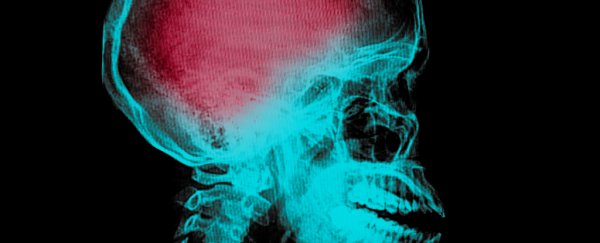People who've experienced a stroke have seen "remarkable" improvements in speech, strength, and mobility after having stem cells injected into their brains - with some even regaining the ability to walk.
It's still very early days, but the success of this small trial suggests that we've seriously underestimated the brain's ability to heal itself, and might one day be able to trigger it into regaining lost functionality.
"One 71-year-old woman could only move her left thumb at the start of the trial," neurosurgeon and lead researcher, Gary Steinberg from Stanford University, told Andy Coghlan at New Scientist. "She can now walk and lift her arm above her head."
This is the second trial that's looked into how stem cell injections into patient's brain can improve stroke recovery - a study carried out in the UK last year also showed similarly promising results in patients, more than a year after treatment.
The latest trial was based in California, and was run by a company called SanBio. The team only tested the procedure on 18 patients, but all of them reported some improvements in mobility, and seven of them reported "significant" progress.
Everyone involved in the trial had suffered a stroke between six months and three years before the study, and their progress had plateaued - which meant they were unlikely to get any better without treatment.
Before and up to a year afterwards, the researchers measured their mobility on a scale of 1 to 100 - with 100 being totally mobile - and found that, on average, people had improved by 11.4 points, which is considered clinically meaningful. Or, in other words, it had a real affect on the patients' lives.
So how does it work? The technique involves injecting stem cells through a borehole in the skull into regions of the brain that are known to control motor movements, and which have been damaged by stroke.
The team still doesn't know exactly how this helps mobility, but with each trial they're getting a clearer picture of what's going on, and it seems the key is triggering the brain to become 'young' again.
The injected stem cells are called mesenchymal stem cells, which in this trial had been donated from the bone marrow of two healthy donors, and were genetically engineered to express a gene called Notch1 - known to trigger brain development in babies. Each patient got either 2.5, 5, or 10 million of these cells.
In rats, researchers showed that these injected cells don't seem to last more than a month in the brain, but during that time, they seem to secrete growth factors that triggered new connections to form between brain cells, and tissue regeneration.
"We used to think the affected brain circuits were dead," Steinberg told New Scientist. "Now, we have to rethink this, and I personally think the circuits are inhibited, and our treatment helps to disinhibit them … We think the cells change the adult brain so that it's more like a baby's brain, which repairs very well."
As promising as this sounds, there's still a lot to be done before this becomes a viable treatment. All of the patients reported at least one adverse effect following the treatment, so further testing will need to show that the procedure is safe.
The researchers behind the UK trial are already in the middle of a larger clinical trial, and the SanBio team is now planning a follow-up with 156 patients, The Washington Post reports. In this next study, one-third of the patients will receive a placebo treatment, to help the team assess just how effective the technique really is.
But there's definitely reason to be excited. "Although small, this latest trial suggests that the treatment is safe and may be able to restore movement to people previously lost after stroke," Shamim Quadir from the UK Stroke Association told Coghlan.
"The trial adds to a growing body of early clinical evidence suggesting stem cell treatment could promote recovery in people months, even years, after having a stroke, bringing hope to many living with a disability."
The research has been published in the journal Stroke.
